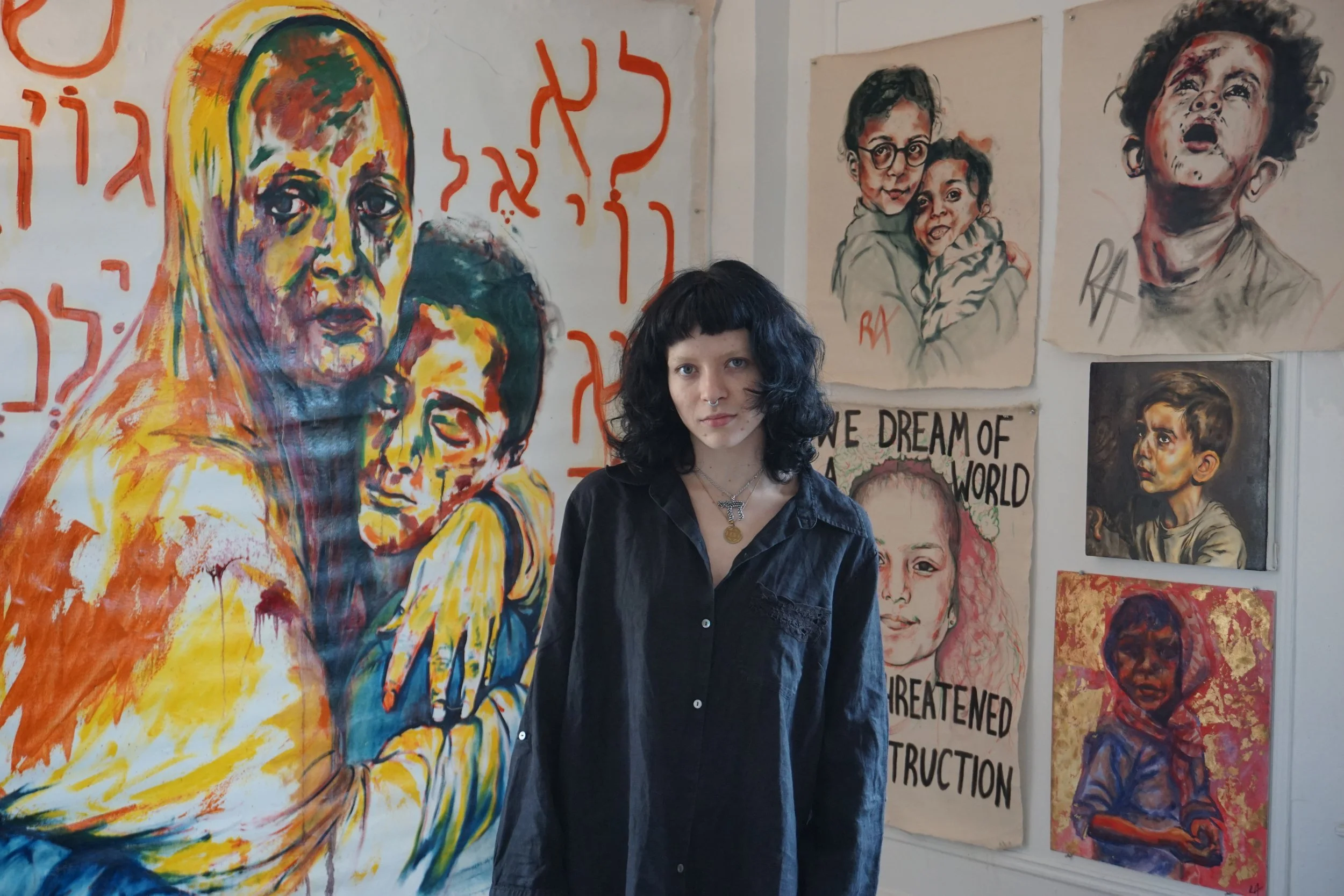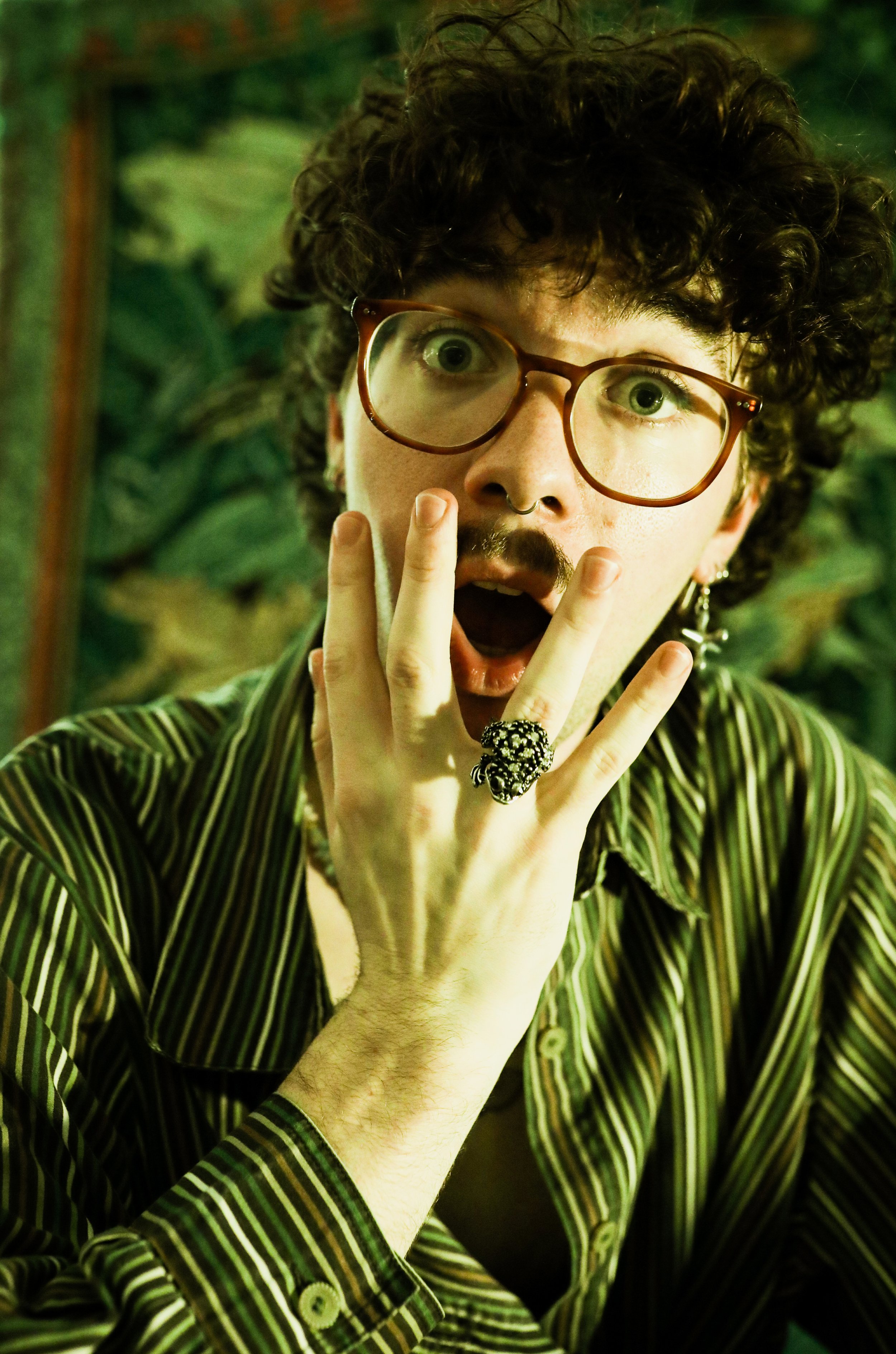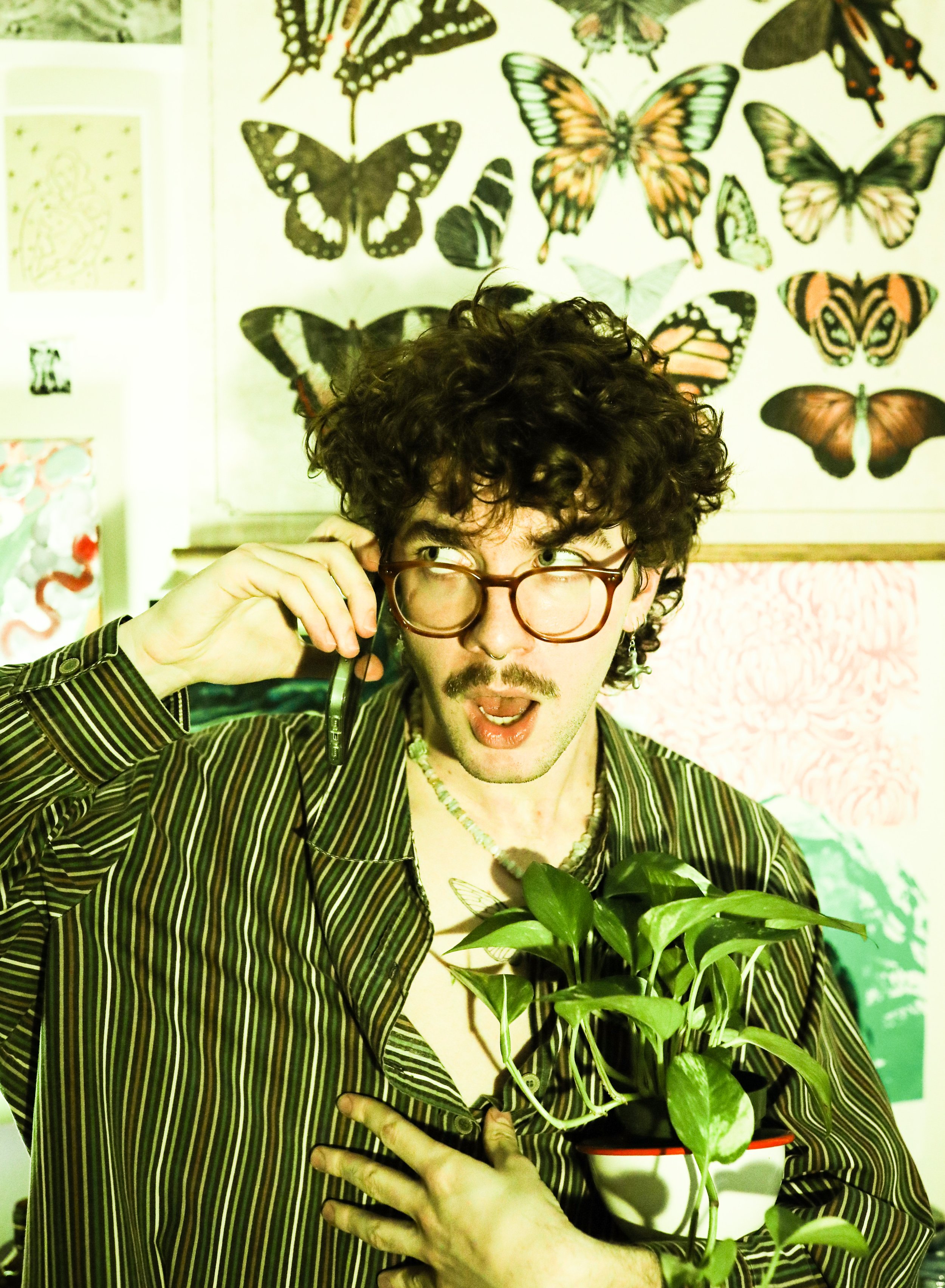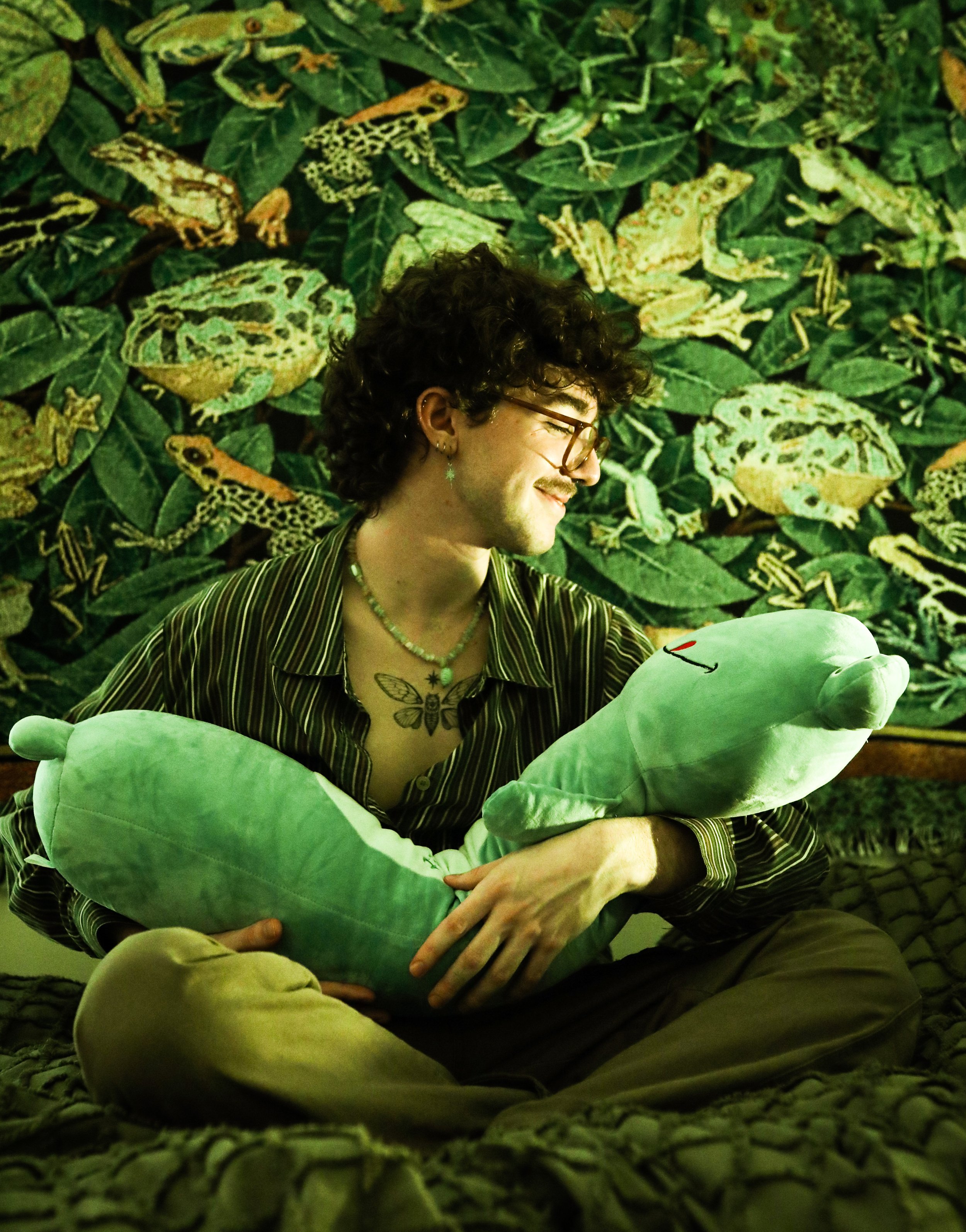Feature by Sadie Hornung-Scherr
Photos by Kendall Bartel
Artist Watson Frank uses themes of nature, animals, and the hidden world of the Earth in their art. Watson doesn’t constrain themself to just one medium. They use charcoal, animation, watercolor, printmaking, and collage in their practice. When I asked why they use so many mediums, Watson said “When I was in high school, I only took AP Studio Art, no foundational classes, which means I never focused on one medium. During COVID, my art making became mostly self driven. It made me ask myself ‘What do I have access to?’ and ‘What can I learn from what I have access to?’ I had access to drawing tools, painting tools, cutting and collaging tools, and some digital tools. Then I asked myself ‘What can I do with all of this?’ I've always just been interested in this feeling of how different ways of making can help express different ideas.
Watson believes that certain concepts and ideas are executed best in a specific medium. “The choice of mediums should serve the concept, rather than the concept being filtered through the medium.” For Watson experimenting with different mediums is an intrinsic part of the complexity in their work and it’s part of what makes their work distinct.
Eels Just Wanna Have Fun
Their ideas are sometimes best served by charcoal, sometimes by watercolor. But whatever the medium is, Watson is intentional. While their lack of access during quarantine turned out to be a blessing in disguise, this constraint of access also pushed them to explore certain themes and ideas. Watson describes: “If I'm in an art class, say a printmaking class, I have to use the print to make whatever I'm going to do. So then I only conceptualize ideas that I think are served best by printmaking. Since prints are easily mass produced and they have connections to children's stories, I would try to make something that challenges the medium of printmaking.” Watson also paints which allows them to think about what ideas they would want to express through printmaking versus painting makes me think about how I can make two different things interact. But that's where things get really interesting, where those boundaries are blurred. This speaks to the whole lie of "Oh, you can't make anything new." There's so much still out there that hasn't been made or explored. I think those unexplored ideas exist in gray areas of medium. When someone says, "I'm a painter" I think an artist limits themself. Sure, you can become a master painter but I don't think mastery is the end goal. I don't think mastery is even possible.”
I think Watson was right when they said art can always be new. Watson did a piece called “To the Worm That First Gnawed at My Corpse”. This work is new and is fundamentally Watson. It is a mishmash of medium-charcoal and animation. The piece quotes a dedication from Joaquim Maria Machado de Assis’ Posthumous Memoirs of Bras Cubas: “To the worm who first gnawed on the cold flesh of my corpse, I dedicate with fond remembrance these Posthumous Memoirs.” Inspired by Bras Cubas, Watson explores the regenerative nature of death. The piece asks what a life cycle is, exploring with medium the questions raised. Watson commented on the piece, “ I wrote a short story called "An Addendum to the Posthumous Memoirs of Bras Cubas." I fell in love with this idea of a conscious worm. I was really interested in this idea of worms being agents of death, but also creators of life cycles. So I had this story and I decided I wanted to draw something connected to worms for my art class. I decided to make an animation instead. It started as this idea of showing how a worm consumes a dead body. As I was making it, it grew on its own. The piece told me what it needed. I found my best work comes when I let the art live and grow on its own. So then it became more of a self reflection through this character of the worm. In this case, using animation allowed this piece to grow in ways I never would’ve thought of myself.”
To The Worm That First Gnawed At My Corpse
In this, we see Watson’s dedication to a meaningful medium. The work needed to be communicated in charcoal animation so the artist did exactly that.
To Watson, inspiration is everywhere. This inspiration necessitates artistic investigation of one’s work and oneself: “It [inspiration] comes and goes and it depends. Since I've been in New York City, I've become a lot more aware of my connection to nature and how much I care about nature and how much I miss it. I took a creative writing class called Animal Tales my freshman year with Annalise Chen. The whole class is thinking about how humans use animals as symbols and how we see so much of ourselves in animals. That really informed my writing. Because I spent so much time doing that in my writing, it trickled into my visual art. I became obsessed with what plants and animals have to offer to art. Animals show up a lot in fables and children's stories but, why is that? What is it about animals and that style and that connection to our basic minds? What is it about that that's so appealing? I think there's something so fascinating there. Also, I think in so many different mythologies animals are the foundation of the natural world. Why is it that? I almost see it appear in all of my classes. Why is it that we always go back there and what can we learn from that? What can I learn from that? What can I learn about myself from that?”.
Bing Bong
Watson is an artist who intentionally considers every part of the artistic process, be it medium, inspiration, or the artist themselves. Watson was a breath of fresh air in a pedantic world of posturing. Watson is genuine and so is their art. You can find more of Watson’s work on their site, https://watsonfrank.cargo.site/, and instagram, @wat_is_the_world.





































